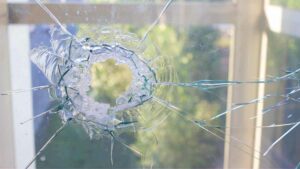What Exactly is “Normal Wear and Tear”?
Normal wear and tear is likely a term you’ve come across as a property owner.
Wear and tear is the normal depreciation of the property. It’s is different from excessive property damage. Excessive property damage is caused by negligent tenants, while wear and tear is natural and not the tenant’s fault.
In this article, we are going over the difference between normal wear and tear and property damage, and outlining when it is appropriate to use the tenant’s security deposit to cover for repair costs.
Wear and Tear vs. Other Types of Damage
Wear and tear makes a rental property lose value, but it is due to regular and ordinary occupation of the rental.
No matter the type of rental unit, there are common areas where normal wear and tear is likely to happen. For instance, you can’t expect your tile floors to look sparkling and new, like when you first rented out the unit. Eventually, they will appear dull or take on a slight discoloration given that the renters walk on them daily. This is normal wear and tear.
The longer your tenants live in your Hampton Roads property, the more wear and tear you are bound to see.
Now, let’s look at property damage. Property damage is unexpected and caused by tenant negligence or abuse.
For instance, if there is a huge hole in the wall or if there’s a shattered window, this is property damage. A hole in the wall or a shattered window does not result from regular use of the property.
Defining “Wear and Tear”
Here are some examples of normal wear and tear:
- Faded, peeled or cracked wall paint
- Torn wallpaper
- Dull-looking floors that need a new coat of varnish
- Faded carpets
- Worn-out enamel on sinks or old toilets
- Loose grouting on the tiles
Defining Unexpected Damage
Unexpected damage is deterioration of the property that can be avoided. It’s the opposite of normal wear and tear.
Damage can be caused intentionally or accidentally.
Here are some examples of unexpected damage:
- Unapproved wallpaper
- Stained or burned carpets
- Chipped flooring
- Extremely damaged windows
- Holes in the walls
- Clogged toilet from misuse
Although the tenant is typically responsible for property damage, it’s important that you know your responsibilities too.
For instance, if your tenant requests repairs and you don’t fix them, then you become responsible for the property damage.
Under the State law, you are required to keep your rental homes habitable for tenants to enjoy living in them. As a property owner, you are therefore responsible for keeping your rental place safe from hazards and keeping it well-maintained.
Adhering to state and local building and health codes is also expected from you.
Using Security Deposits for Repairs
You need to be aware of what counts as normal wear and tear and what counts as damage. That’s because you cannot use a tenant’s security deposit to cover for the cost of repairing normal wear and tear.
If you determine that the loss in value is beyond normal wear and tear, you’re allowed to use a portion of the tenant’s security deposit to cover the costs.
Monitoring Property Damage Using Photo Documentation
Performing a move-in and move-out inspection with the tenant can help you in the long run. While doing the walkthrough, you can communicate to your renter the difference between unexpected damage and wear and tear so you both have a mutual understanding of the definitions behind them.
We also highly recommend that you take photos of the condition of the rental unit before the tenant moves in so that you have proof of the state of your rental. Current damages will also be seen.
By documenting through photos, it will be easier to see who’s responsible for shouldering the cost of property damage.
Once the tenant is living in your property and you spot damage, the first thing you should do is photograph it.
Then, list down the items you need to repair and the cost of each item. You must pass this itemized list to the renter if a portion of the security deposit is taken.
Tenant Screening as Property Damage Prevention
A great way to keep your rental damage-free is to conduct a thorough tenant screening. This mitigates the risk by selecting responsible renters who will help keep your rental unit maintained.
It’s important to go over the renter’s eviction history and speak with previous landlords to find out if it’s a good idea to welcome the prospective tenant to your rental home.
Bottom Line
Understanding the difference between normal wear and tear and excessive property damage is crucial.
As a landlord, you can only deduct from a tenant’s security deposit to cover the costs of damages caused by tenant negligence or abuse. You cannot use their security deposit to cover the costs of normal wear and tear.
For more information or questions, please contact Limehouse Property Management.




